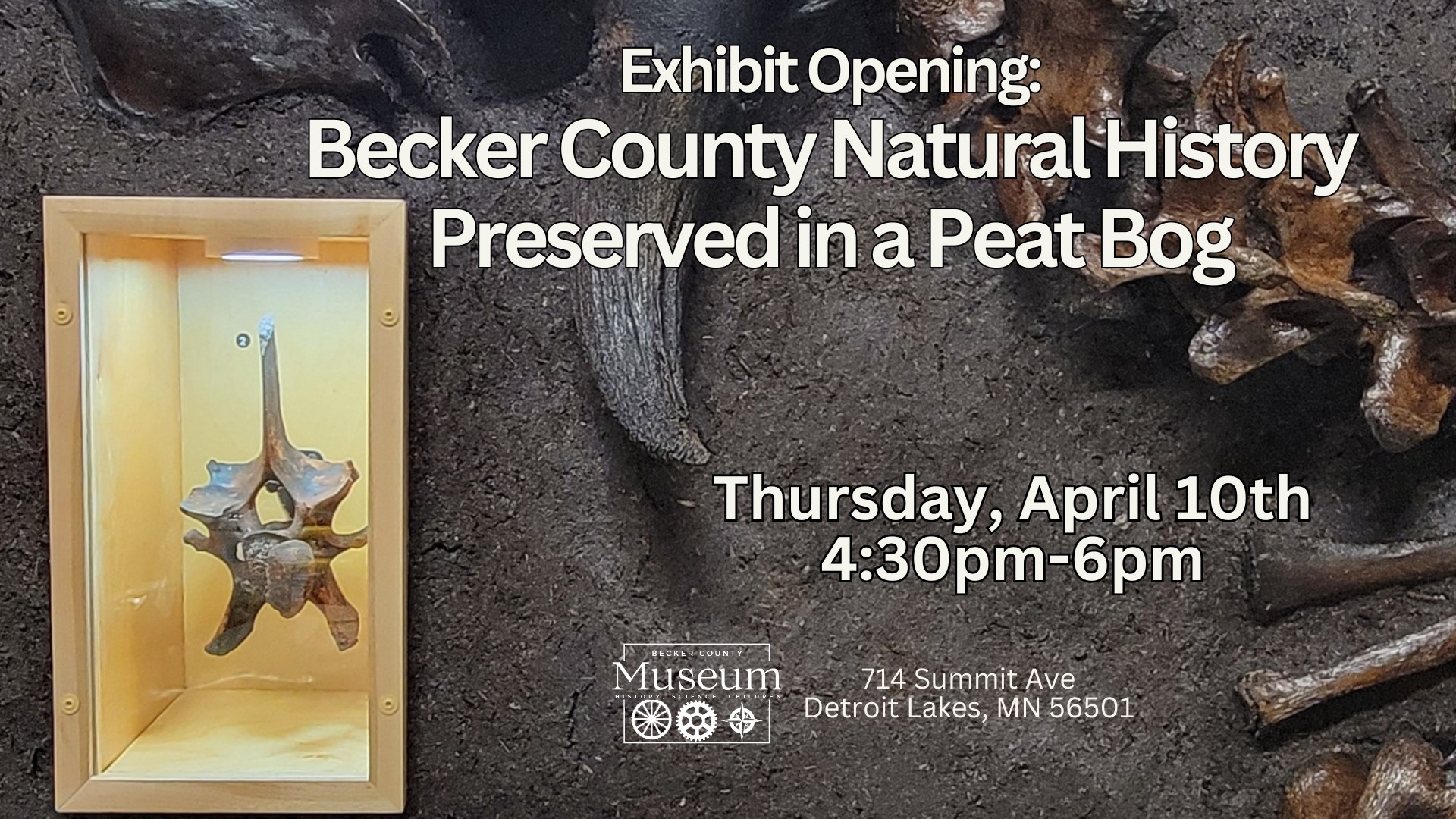
Detroit Lakes, Minn. (KWAD) — A centuries-old discovery in a Frazee-area peat bog is now at the heart of a groundbreaking new exhibit at the Becker County Historical Society and Museum, opening April 10 from 4:30 to 6:00 p.m.
The exhibit showcases remarkably preserved bison bones — some with cartilage still intact — that were found by a local landowner and later verified by the Minnesota State Archaeologist to be several hundred years old. Cartilage preservation is exceedingly rare, but the cool, oxygen-deprived conditions of the peat bog helped protect these delicate tissues for centuries.
“This is truly something unique to our county,” said museum executive director Becky Mitchell. “When we received the bones, we knew we had to do something special with them.”
To bring that vision to life, the museum partnered with artist Hans Gilsdorf, who has a background in Hollywood set design and museum dioramas. His immersive 360-degree display blends science, art, and environmental education, giving visitors a visual and emotional connection to the bison’s final moments — and the ecosystem that preserved them.
The exhibit portrays multiple layers of time. The top features a present-day bog scene with native grasses and a coyote hunting a lemming. Below, a sculpted bison appears mid-struggle as it sinks into the bog. Beneath that, Gilsdorf illustrates the underwater world of the bog, where bony fish move through waterlogged tunnels beneath the surface.
“Peat bogs are alive, even when we don’t think they are,” said Mitchell. “That sense of life, of an ever-changing landscape, is what this exhibit captures.”
The back of the exhibit highlights bison anatomy with bones displayed behind glass, accompanied by educational text. Layne Klier, the museum’s program and event lead, helped craft the narrative. She pointed out how tannins in the peat stained a humerus bone with a tie-dye pattern — visible evidence of the environmental processes at work.
Peatlands, Klier explained, aren’t just relics of the past — they’re essential to the present. “Peat bogs are carbon sinks. They store twice as much carbon as all of our forests combined,” she said. “They’re critical for climate stability, but most people don’t realize that when they see what looks like just a field with tall grass.”
The exhibit not only highlights the rare find but also emphasizes the environmental significance of peatlands and the stories they silently preserve. “History isn’t just about looking at something old in a case,” Klier said. “It’s about learning from the past to better understand the present.”
Though the exhibit will remain in Detroit Lakes for now, its mobile design means it could travel to other museums in the future. Mitchell hopes it will spark interest in the region’s unique natural history and encourage people to explore their local museums.
“Big museums get all the attention,” she said. “But it’s the local ones that tell the stories of the people — and the land — right here.”
The bison exhibit is now part of the museum’s natural history collection and marks a powerful collaboration between science, storytelling, and artistry.
